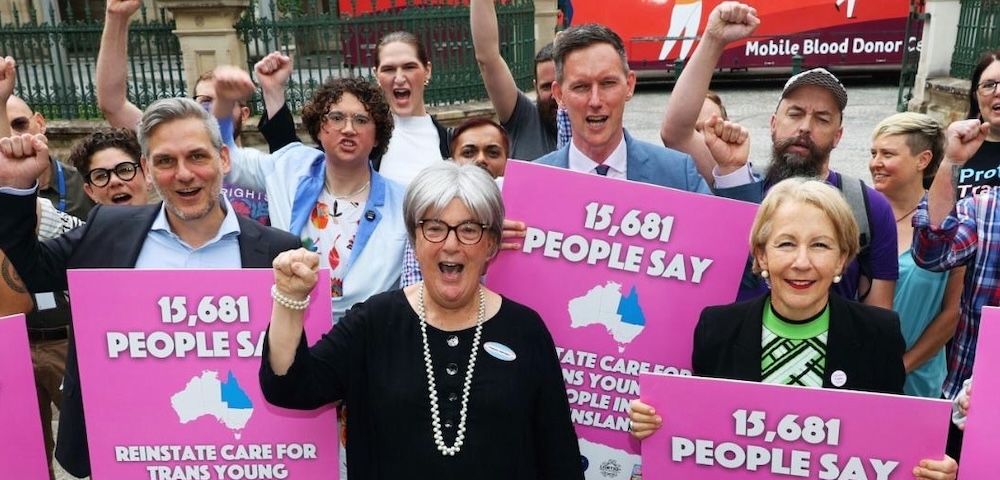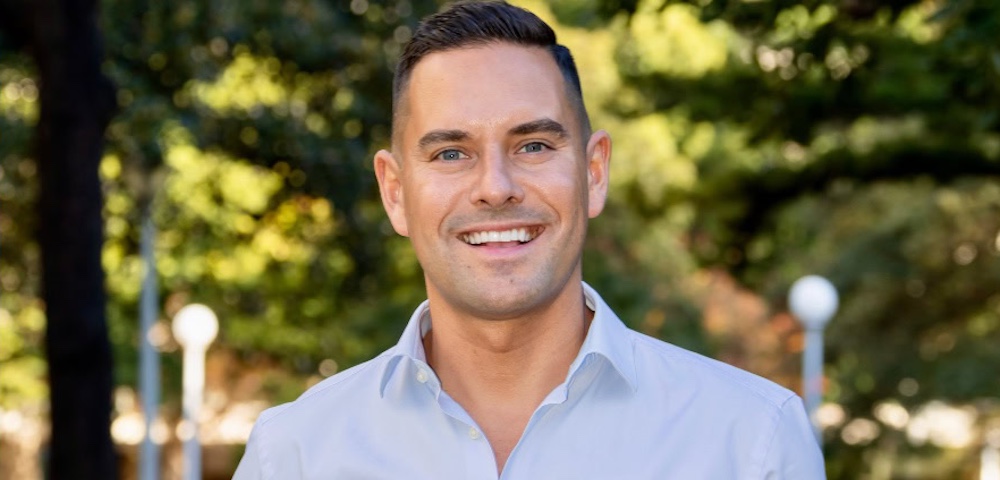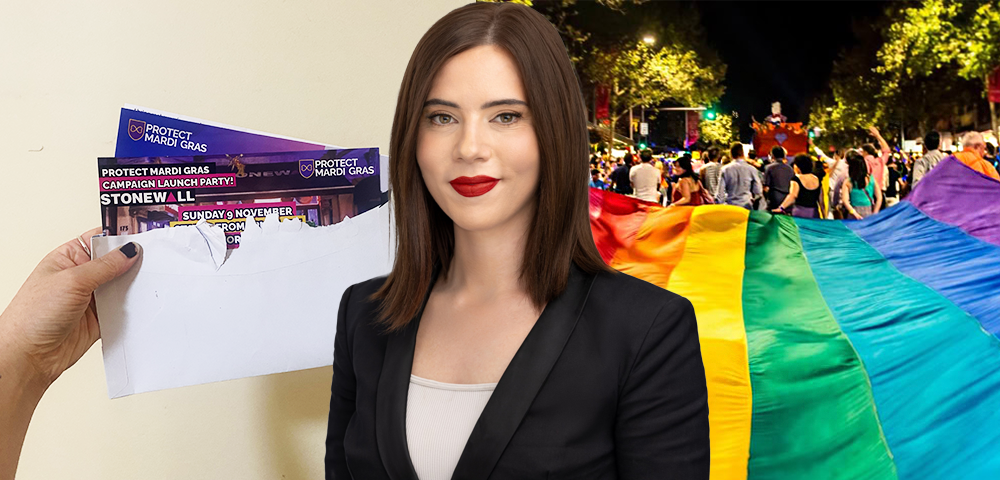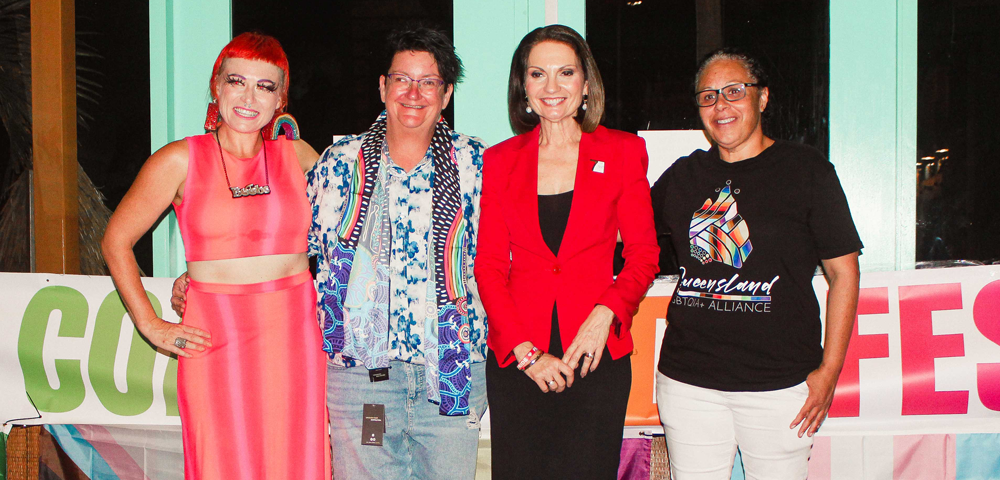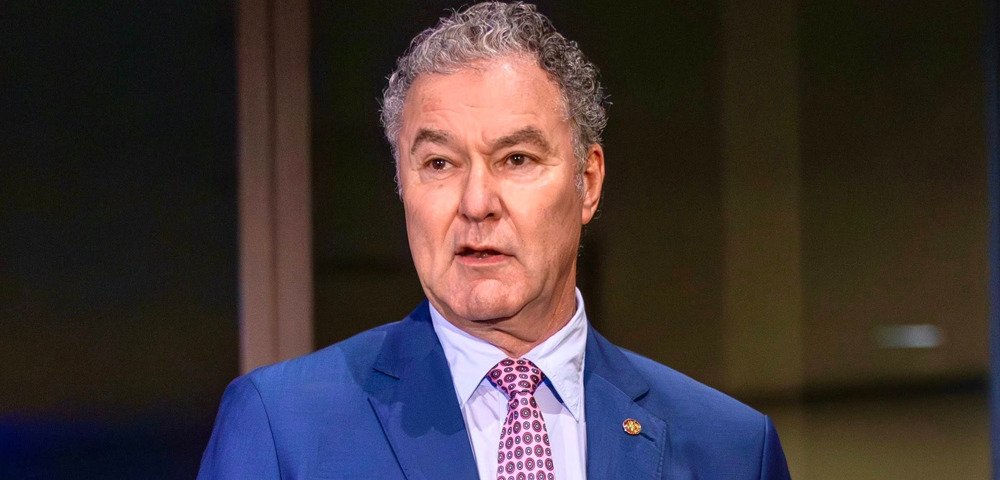
Paul Freeman on capturing the ‘complex masculinity’ of gay men
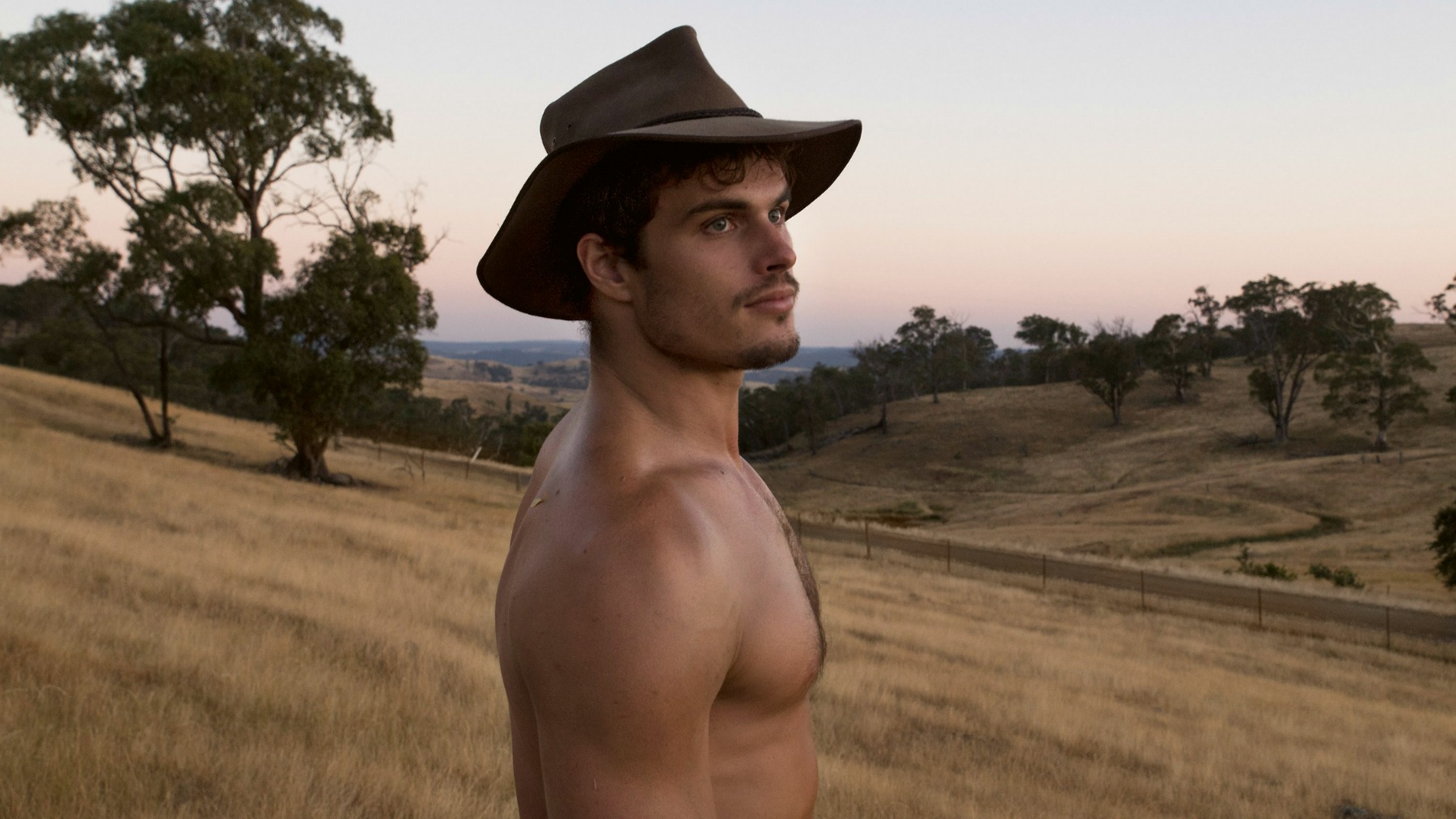
IF photographer Paul Freeman had to use one word to describe his male aesthetic, it would be the ‘larrikin’.
It is also the title of his new series of coffee table books: Larrikin has just hit the shelves in Australian stores, and its follow up Larrikin Yakka is due to be released in March.
“He’s the incarnation of everything I find wonderful about sensitive masculinity,” he tells Star Observer.
“That Aussie, free-spirited, cheeky, naughty anti-authoritarian guy that is really sexy but doesn’t necessarily know it. He exudes sexiness but he’s not self conscious about his beauty.”
One thing Freeman rejects though is the recent concept of ‘masc’ that has appeared in gay identity politics. Although he doesn’t participate in “that world”, Freeman says he is aware of things like ‘masc4masc’ but feels as though the gay community turns everything into caricatures.
“Some of the gay guys I shoot would probably identify as masc, but for them it might just mean they look manly according to the fashion, and are not overtly camp in mannerisms. It doesn’t mean that they are comfortable in their own skins. I’m working in a two dimensional art form, creating my own ideal so I don’t have to be too concerned about any of this; my aesthetic and what I’ve always been attracted to as a gay man is personal.
“I don’t think it’s a John Wayne man at all but a very complex masculinity. There’s a mental aspect – a vulnerability yet a self-assuredness. What makes a strong man is not just about being brawny and fighting, but it’s definitely about the crossover between what we like to call feminine and masculine traits.”
When asked if being ‘hung’ is a requirement of becoming one of his models, Freeman gives an empathetic no. In fact, he reveals one thing he does regret is creating the impression that everybody is well-endowed.
“I really fucking love it if a guy, and it happens, isn’t self-conscious about their appendage, or how it will appear, and doesn’t require you to enlarge it,” he says.
“I would much prefer having a wider variety. But if you’re getting someone to volunteer to be in a nude book, and they’re worried about how they’ll look, in a world where the male appendage has been relegated to such a status, you want them to be proud of the shots and how they’re looking.
“To a certain extent you have to make the guys happy. Of course, a lot of people you wouldn’t enlarge because they’re already ridiculous (in size) but if someone wants to look different to how they appear in real life, then I have to.”
So how does Freeman create the illusion that every model has that ‘look’? He says through digital magic using Adobe Photoshop. Fluffing is not listed in his job description.
“I think people have this real misconception of a shoot, where I’m just relaxedly staring at a sexy guy for hours,” he says.
“There’s dirt, spiders, potentially snakes. We’re all sweaty cause it’s hot and they’ve got shit all over them, and they’re lying on some rusted metal, or doing something equally uncomfortable, being bossed around. There’s nothing sexy about it from all points of view.”
Taking a look at Freeman’s book store on his website, which features the 14 books he has released over the past 12 years, one would think he is constantly working.
But Freeman says, like all artistic people, his creativity and motivation ebbs and flows.
After a five-month holiday in 2015, Freeman returned to Australia with a number of new photoshoots under his belt. Despite having enough content for three books, he didn’t find the motivation to start putting one together until 2016.
“I felt a little trapped in a corner about what I was doing, or what it was for,” he reveals.
“What else can I do with the male nude that I haven’t done?”
But when a fellow photographer suggested he should do a Kickstarter to cover costs, he got a wave of enthusiasm.
It only took about three weeks to put the Kickstarter together, and the reaction from fans took him by surprise, with 903 people pledging $163,429 to the project. Freeman puts it down to involving his fans in the process, which made it feel more personal for them.
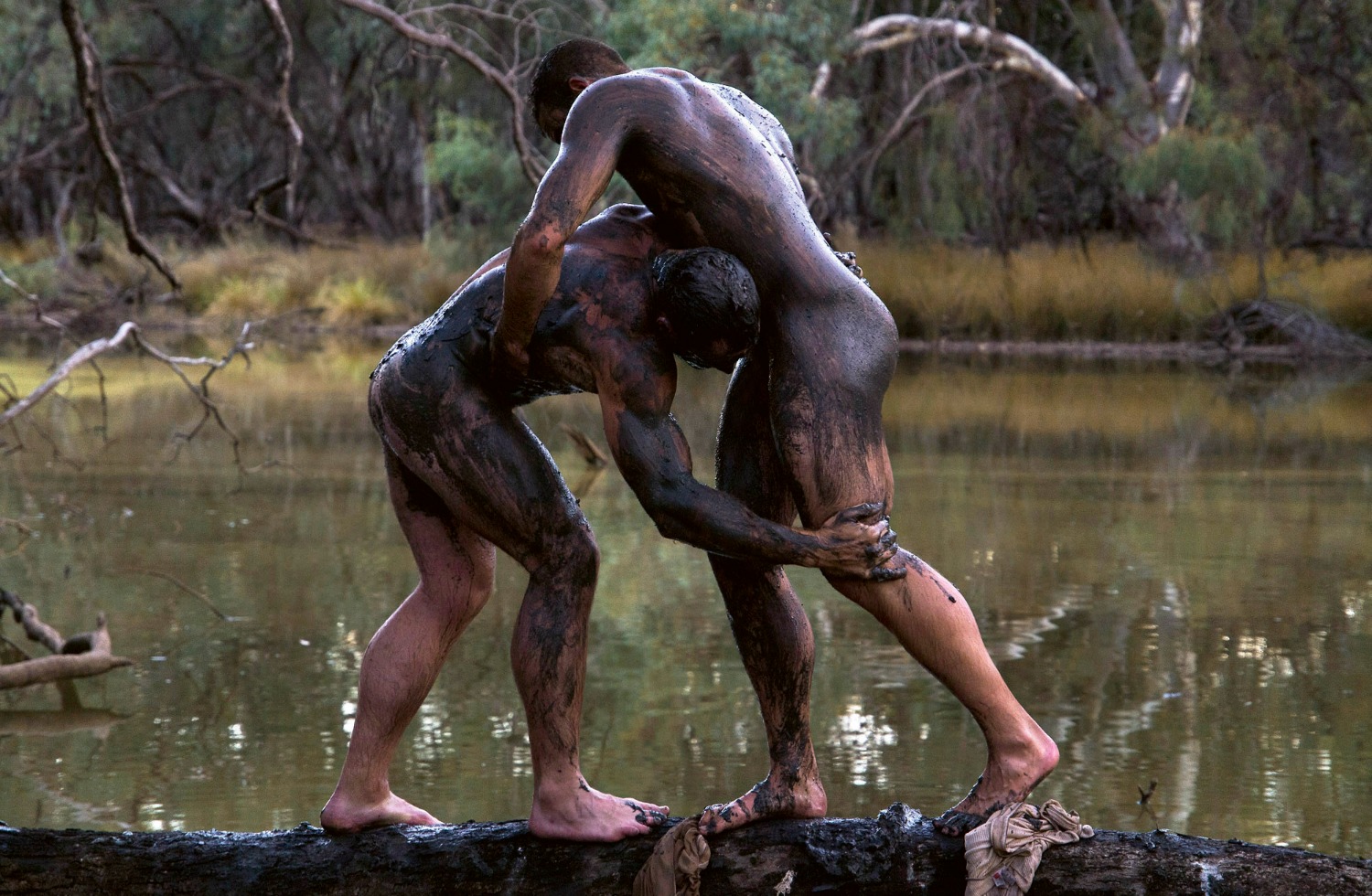
It’s strange to think with all his success that Freeman didn’t originally want to be a photographer, and didn’t start considering it as a viable career until his 30s.
After graduating from university with a Bachelors of Arts in History and Literature, his sights became set on becoming an actor. But a lack of confidence stood in his way.
“I realised I was almost going to be 30 being a nobody with just a few theatre roles but not making a living out of it.”
A guy he had been in love with at university had showed him how to process photos, and he picked up tips from photographers during modelling jobs. After buying a quality camera to take to Bali for a holiday trip, Freeman started taking headshots of friends and realised it would be a good way to make money.
Before too long he started getting commissioned work, and eventually started submitting to big name magazines like Black and White and Blue.
The original idea of putting together his own books was inspired by the “appalling” rates coffee table publications were paying for editorial work at the time. They would barely cover the cost of film and processing.
“Your dream while working on coffee table publications is that you’d put one out that you control and edit,” he says.
He approached a couple of publishers, but they wanted the lion’s share of the profit.
“You think, ‘well I’m doing all this work and you’re taking 95 per cent of the retail price’. It’s insulting.”
Freeman also wanted to get away from the “slick and non-organic” male photography that appears in the majority of publications. He felt detached from it, like there was a lot about the male physique that wasn’t being answered for. Self-publishing gave him that freedom.
As he worked on his style and evolved as a photographer, Freeman found solace in the work of photographers like Bruce Weber. In particular, he cites Weber’s 1991 book Bear Pond as a major inspiration.
“He presented the utopia of three naked boys cavorting around this natural environment. The photos created a lifestyle that wasn’t accessible to you,” Freeman says.
“Even though Bruce prefers a slightly younger male to me, I applied my own voice to what I thought men could be which is a combination of things but somehow marrying the visceral qualities of masculinity with a haphazard nonchalance about those looks that was kind of what what I found magical about men when I was closeted in Tasmania.
“Straight guys who were really sweet and sensitive and didn’t know how attractive they were but were kind of vulnerable as well.”
During a visit to New York, Freeman “forced himself” on a distributor who agreed to take a risk on his first title. With the financial backing of an ex-partner, he was able to finally achieve his dream of releasing his own book.
It wasn’t an instant success.
But Freeman was happy.
“I had a book out, it was mine and it was what I wanted. Financially it probably just broke even,” he says.
“I did ok, but not enough to put another book out straight away.”
Now 14-book deep in a successful photography and publishing career, Freeman admits he still sometimes questions the style choices he made a decade ago.
“I’m hugely self-critical,” he says.
“When I look back further (than my most recent book), I think ‘why did I even make that decision? There must be a reason but I can’t see that now’. I would make completely different photo choices.
“Weirdly when you haven’t looked at a book in years, you’re like ‘oh, this is rather good’. You can look at it like a new thing that’s not yours. Also, taste levels and photo aesthetics change.”
In terms of his evolving style, Freeman says he is less inclined to be as “confronting” with his work and is more interested in using environments. He is also shooting in a much simpler, more organic way with a lot of natural light.
“Bondi was trying to be more confronting about the body and yes, a man has a fucking penis – I’m not going to recoil or be ashamed about that – because I think there’s so much shame about the male body,” he says.
“But now that controversy isn’t in my work. You see so much male photography of guys put in really sterile ‘glamourous’ environments but I think male beauty can look so much more beautiful when you juxtapose it with a desolate or decrepit rawness. For me, this accentuates the boyish beauty in their face versus the masculinity in their body.”
Freeman says he finds his current style the most authentic way of shooting and isn’t bored of it yet. He also thinks people don’t necessarily like it when he branches out.
When his two-part Heroic series was released, it wasn’t as popular as his other work.
“A different market begs me to do another Heroic book but it isn’t a commercial viability,” he says.
“The problem with doing these sorts of books is you have to sell a critical mass to pay for it. If I was selling prints at amazing prices, I would release a tome of my work exactly how I wanted it to look.”
When it comes to his reputation, Freeman admits he is rarely exposed to the general public’s opinion. Most of the feedback he receives is from people writing to him, who ‘get’ or love what he does.
“Occasionally, I get wind of slight disparagement by happenstance,” he says. “And, being of an artistic nature, this will always sting more than all the positive reinforcement.”
At a housewarming party he was invited to, Freeman was introduced to a French man who, when realising who he was, said ‘Oh you’re the one who takes the tacky photographs of naked men’.
When Freeman bumped into him a few months later at The Beresford, he worked up the courage to discuss it.
“‘He was like, ‘I was off my face that night, I’m so embarrassed, I hadn’t even seen your work’. I was brooding over this for a year, and it was all for nothing,” Freeman says with a laugh.
“I wish I did that with praise.”
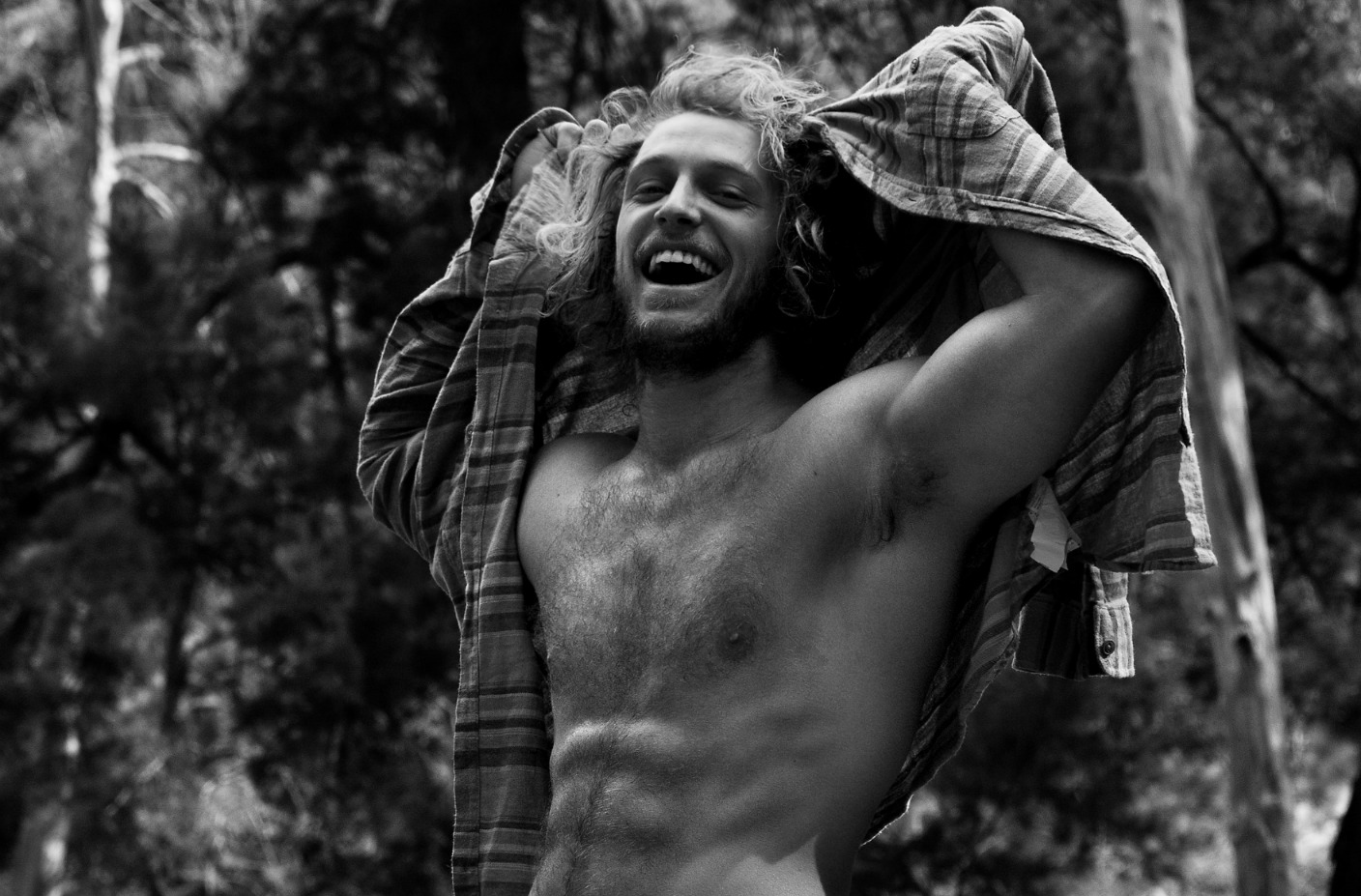
Freeman is still based in Rose Bay, which is the same suburb he stayed in when he first moved up from Tasmania, enticed by the “huge gay world” in Sydney he had read about.
The now openly-gay photographer didn’t come out to his Catholic family until his 30s, so he found comfort in the freedom the move awarded him.
However, one thing Freeman does regret is not coming out to his mother before she died when he was 29.
“Always in my head I thought my dad would die first and I would tell my mum,” he says.
“I felt such guilt when my mother died – I’d been lying to her all those years. When I flew back to Hobart and first viewed her at the funeral place, I was hysterical with grief and they had to drag me off the body to leave.”
Freeman was incredibly close to his mother until he was about 12, but they fell out over religion.
“I think I was angry because I felt my homosexuality when I was about five or six and knew what I was,” he says.
“Around puberty I started getting angry that I was stuck with it and I blamed my parents for everything that I was feeling.”
Nowadays Freeman is a lot more comfortable with his sexuality, but admits his career leaves little room for romance – mostly by choice. He finds himself less productive work-wise when he’s in love.
“I usually hit the two-year mark and get bored,” he says.
“In the last ten years I’ve probably only had a seven month relationship and a bunch of affairs around the world. But this has been the most productive I’ve been in my life.
“The last long-term relationship I broke up because I remember saying, ‘I haven’t really done anything with my life I’m happy with. I’m not getting any younger and I need to focus on it’.”
But he admits to still being a hopeless romantic at heart.
“I still get overly engrossed. If I get infatuated with somebody, it becomes all.”
For more information about his work, you can visit http://paulfreeman.com.au




